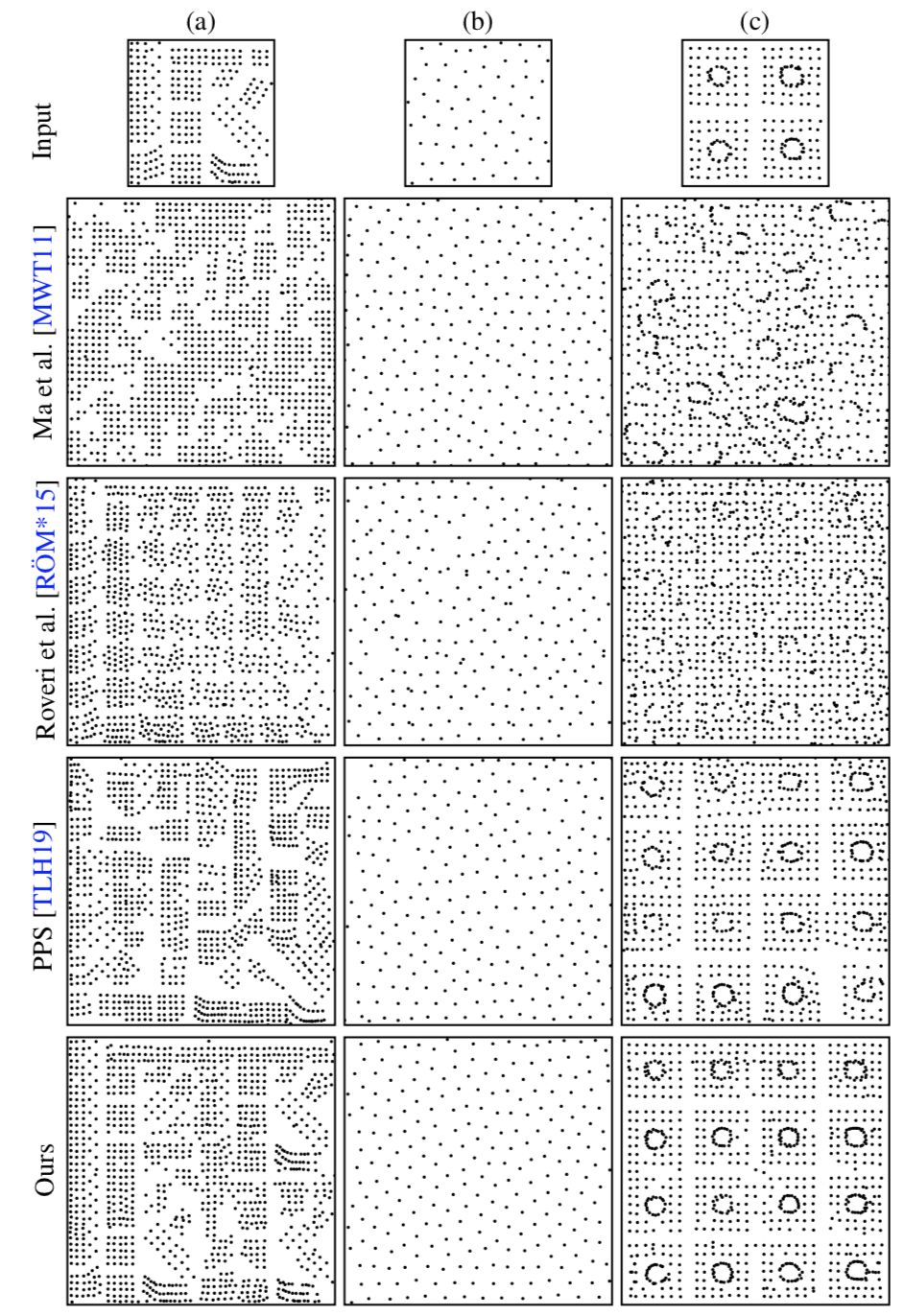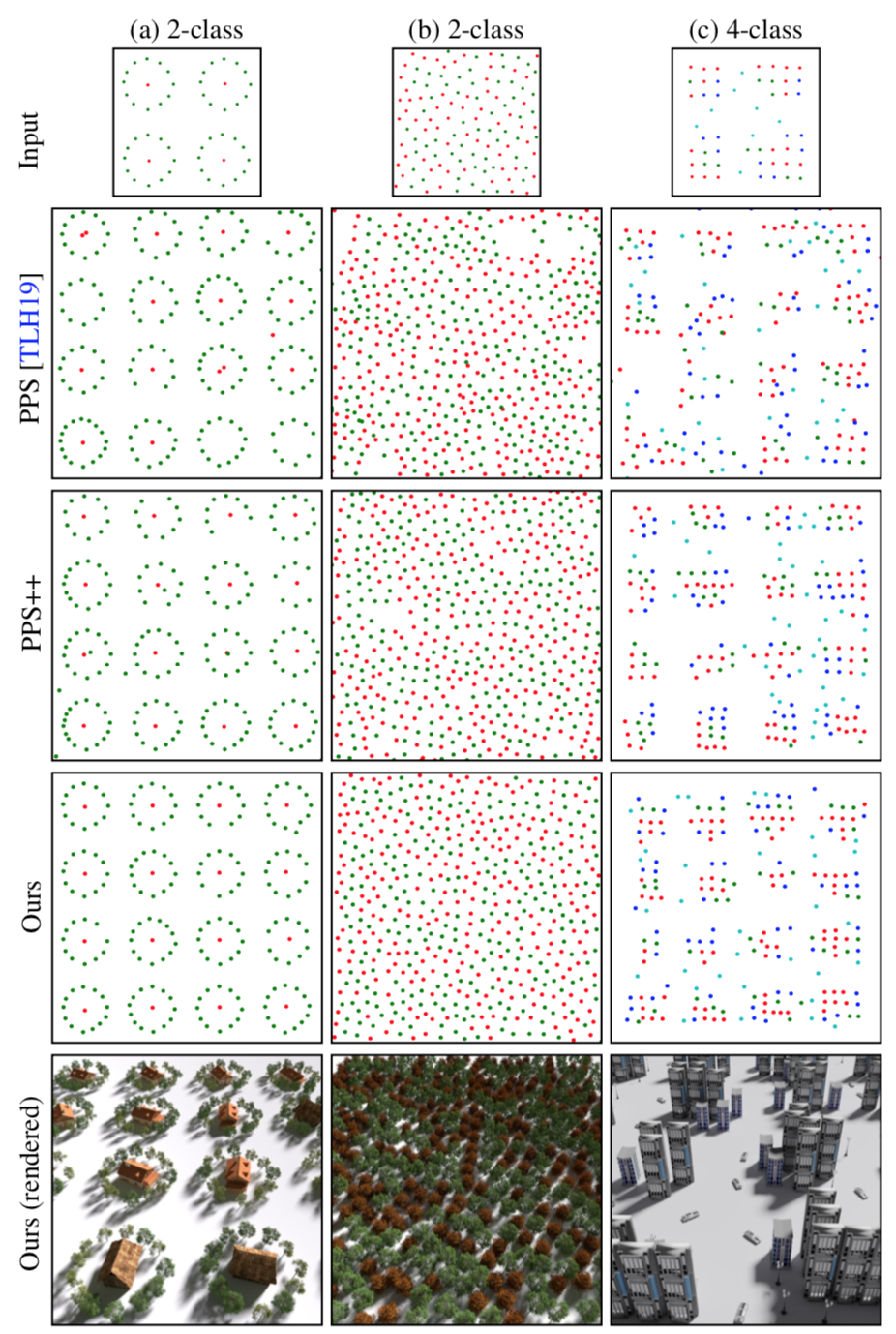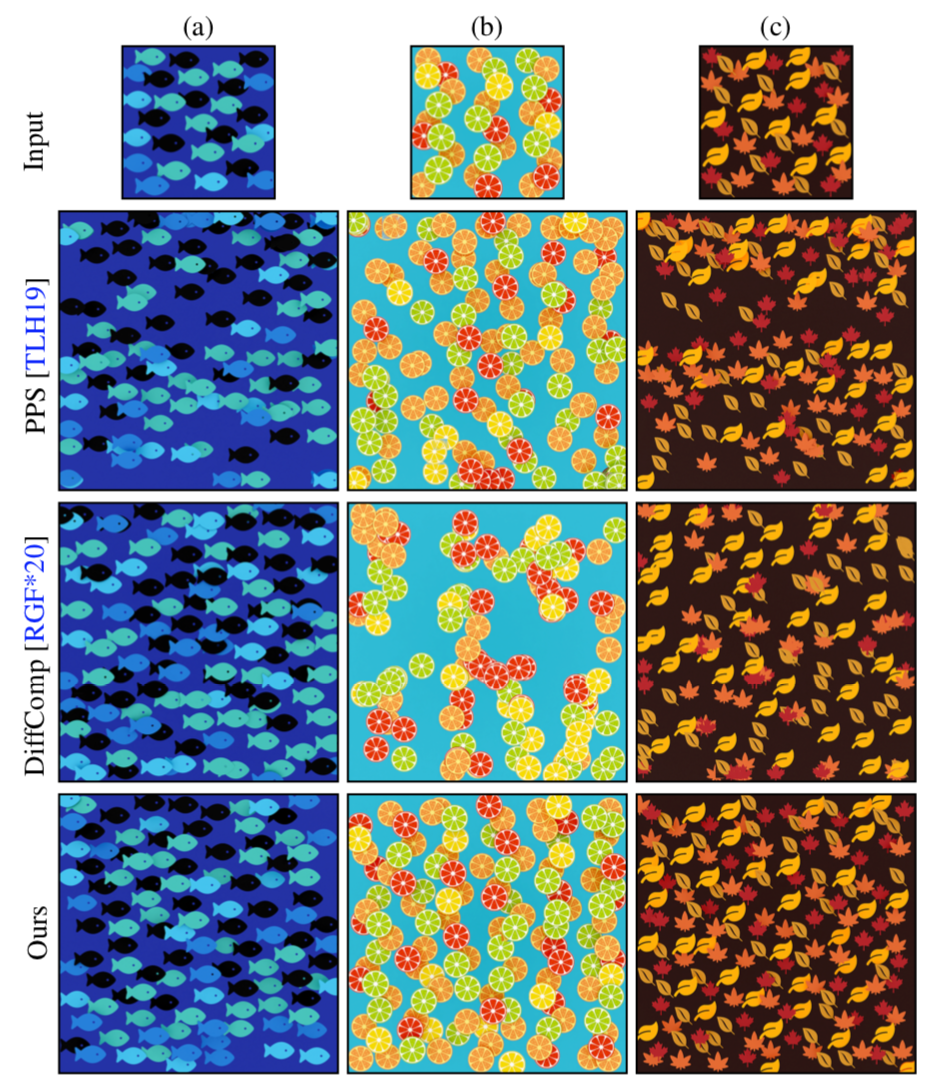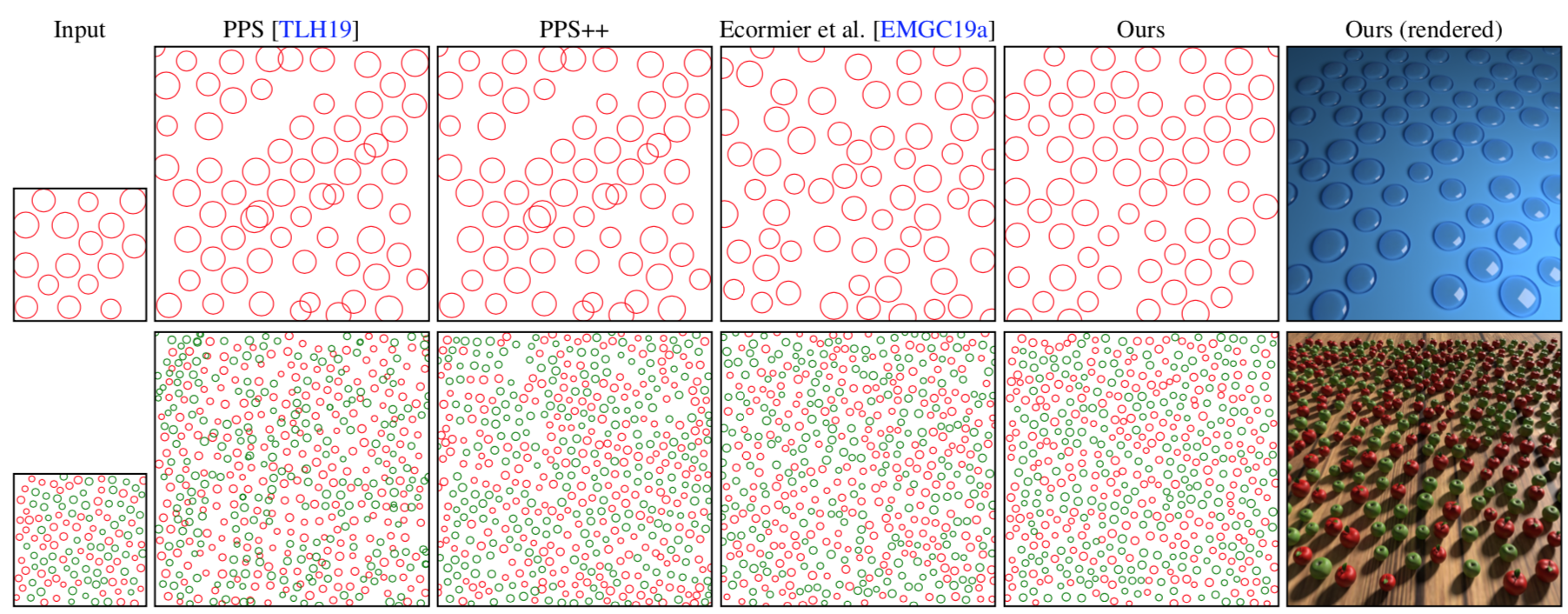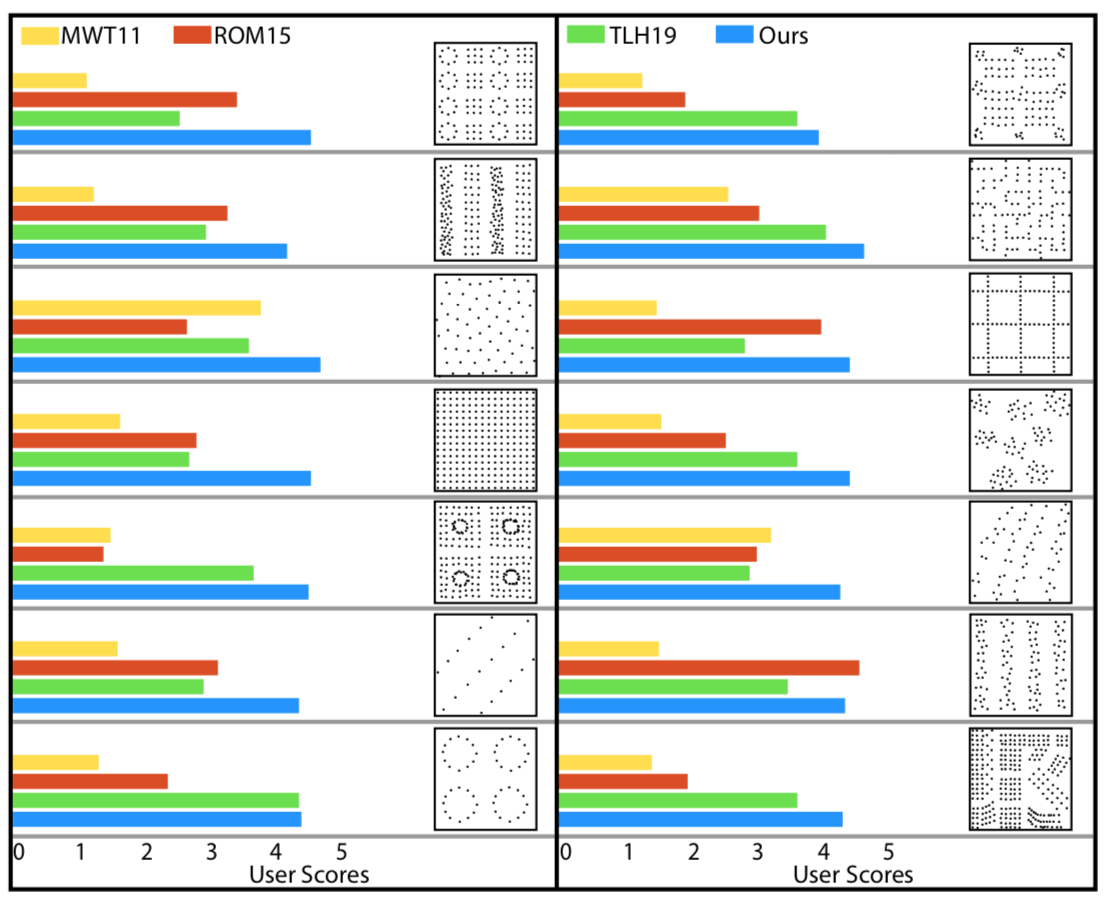
Our method takes simply a point set (with positions, classes, attributes) as input and applies continuous Gabor transform to extract features. We then use these Gabor features to synthesize a larger scale output. We show synthesis results of a 2-class point pattern in (a), and a 4-class point pattern with depth and scale as attributes in (b).

